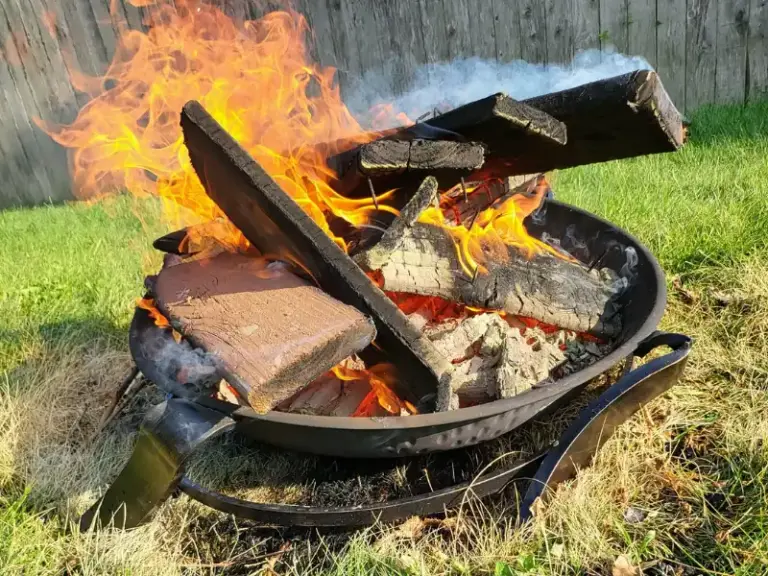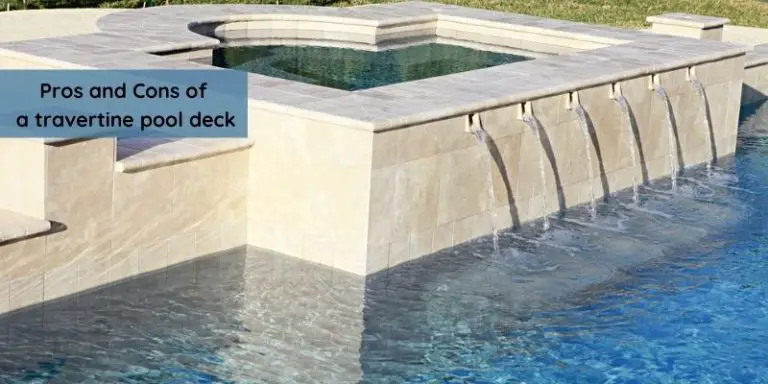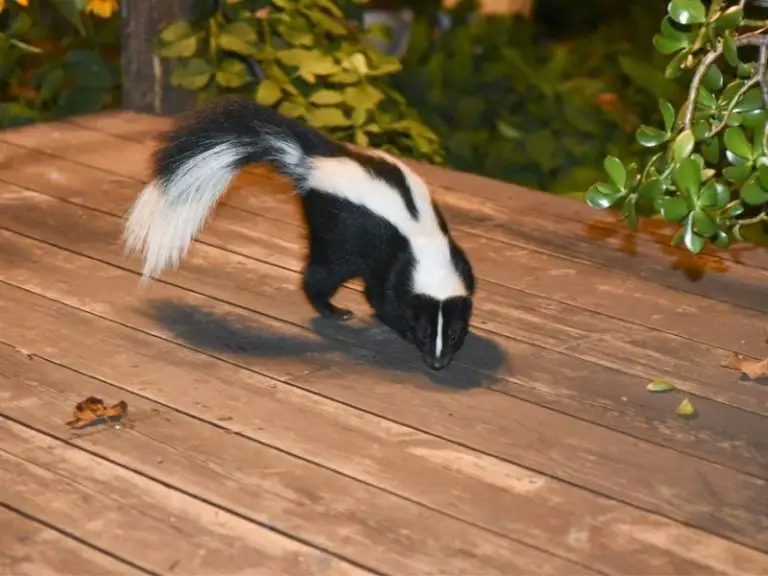Can You Put a Fire Pit on Grass? Ways to Prevent Damage
Fire pits are great for keeping warm and enhancing the ambiance when relaxing outdoors. While they’re most commonly used on patios and decks, they can also be placed on the grass. Key safety features to prevent grass damage when using a fire pit on your lawn include DIY heat barriers, and commercial heat shields, and fire-resistant mats.
Is it okay to put a fire pit on grass?
You can put a fire pit on top of your lawn grass, but you have to consider the necessary safety precautions to avoid damaging the grass. For starters, you should pick a spot on the lawn that’s a safe distance away from landscape plants, hardscapes, and backyard furniture. The fire pit should be placed about 20-25 feet away from trees and structures that can catch fire.
Even with the fire pit positioned a safe distance away from other items in your yard, you still have to take into account the possibility of the grass suffering heat stress. Excessive heat from the fire pit causes the grass under and around it to weaken and eventually die out.
What’s more, when the pit is placed directly on a single grass spot for several days, it causes compression pressure, resulting in unsightly dead spots known as ghost prints. That part of the lawn becomes discolored, thus diminishing your curb appeal. You, therefore, need to protect your lawn grass before setting up a fire pit on it.
Pick a Flat Spot
Ideally, you want to position your portable fire pit on a level spot on the lawn. If you place it on a grass spot that’s sloppy or has bumps, it may topple over, causing a fire outbreak or severely scorching your grass.
Wet the Grass
If you want to place a fire pit over grass without damaging the grass, spray the chosen grass section to soak it up. The moisture will prevent heat stress damage on the grass by countering the high heat levels from the fire pit.
Note: Only spray enough water to moisten the lawn soil and wet up the grass blades, as you don’t want to waterlog your yard. What’s more, soggy lawn soil is too soft to provide a firm base for a fire pit.
Move the Fire Pit
Avoid keeping your portable fire pit on a single spot on your lawn, as the prolonged compression will cause dead spots. Instead, move it to different spots on the lawn every few days.
Clear the Fire Pit Area
Before setting up your fire pit on grass, ensure the chosen spot on your lawn is free of dry twigs and fallen leaves that could catch fire. Use a rake to clear the lawn area.
Install a spark Screen
For fire pits sitting directly on top of your yard grass, install a spark screen on top of the pit. This protective cover prevents sparks and flying embers from scorching the grass and triggering fire outbreaks when they land on dry leaves or other nearby items.
Keep a Fire Extinguisher Close by
Despite your best efforts, a fire accident may still occur whenever you’re using a fire pit over grass. Thus, you should always stay ready for any unprecedented incidences by keeping a fire extinguisher close to your yard.
What can I put under fire pit on grass?
While the aforementioned safety measures can go a long way towards protecting your lawn grass, damage prevention is never guaranteed as long as the fire pit is sitting directly above the grass surface. For maximum, protection, you need a barrier between the base of the fire pit and the grass blades underneath. Effective heat barriers may include wood pallets, brick/stone pavers, commercial heat shields, and fire-resistant pads/mats.
A Brick and Wood Pallet Base
You can protect your lawn grass from fire pit heat damage by installing a brick and pallet base for the fire pit. You can also use stone pavers instead of bricks.
Start off by positioning a wooden pallet or plywood board on top of the flat grass spot where you want to place the fire pit. Then, wet up the pallet or plywood board to safeguard it against any potential fire/het damage.
Next, position bricks atop the wooden pallet/plywood in uniform rows and columns until the wooden base beneath it is completely concealed. The firm bricklayer will absorb most of the heat from the fire pit, while also providing a stable platform for the pit to sit on.
What’s more, the raised pallet/brick base provides a raised platform that increases the distance between the fire pit and the grass, thus minimizing the chances of heat damage.
Note: Ensure to remove the wood pallet and brick platform once you’re done using the fire pit. This will prevent the grass below from dying due to compression pressure from the weight of the bricks and the pallet.
Install a Heat Shield
A heat shield forms an excellent heat barrier between your lawn grass and the fire pit. Premium-quality heat shields can protect your grass against strong fire pit flames generating up to 2,000 degrees of heat. On the downside, though, most heat shields are rather heavy.
Note: Heatshield brands produce products with varying heat capacities. You should, therefore, check the product manufacturer’s labeling to ascertain how much heat the shield can withstand.
One notable effective and safe heat shield product is the Deck Defender and Grass Guard by Northland Metal Industries, which is 100% fireproof and can hold up to temperatures of up to 1500-degrees Fahrenheit. It features aluminum construction for optimal heat absorption and a high-gloss metal surface finish for optimal heat reflection.
Install a Fire-Resistant Mat/ Ember Mat
Ember mats are a more lightweight alternative to heat shields and provide decent heat protection to grass surfaces. They’re typically made of heat-proof materials like volcanic rock and carbon fiber. Some also boast additional insulation features, such as air spaces within their core structure.
Fire mats/fire pads are also available in a wide range of shapes and sizes. Thus, you should go for one that matches the dimensions of your fire pit.
A good example of an affordable yet effective fire protective mat is the Fire Pit Pad Protector from Newtex. While it’s primarily designed to protect the deck, it can also be used on grass surfaces.
The Newtex Fire Pit Pad Protector features Z-Flex Aluminization surface technology to reflect heat away from the grass. It also boasts military-grade heat-resistance technology.
How to Fix Grass that’s damaged by a Fire Pit
If the heat from your fire pit has already caused brown blotches and bare spots on your lawn, there’s the threat of weeds sprouting in place of the damaged grass. No need to worry though, as you can prevent weed invasion and revive the heat-scorched grass by watering and fertilizing the damaged grass spots accordingly.
Adopt Appropriate Watering Practices
If the heat from your fire pit has caused spots on your grass to turn brown, you can cut down the recovery duration of the scorched grass blades by deeply watering the affected lawn area. You need to soak up at least 1.25-inches of the soil to ensure that the grass root zone is adequately wet. Within a week or two, you should be able to see new, green growth on the once brown grass spots.
Apply Fertilizer
Normally, heat from fire pits causes worse damage to yard grass compared to sunburn damage. This results in bare patches on the lawn, which are unsightly, and may encourage soil erosion and weed invasion. However, the grassroots are usually still alive and you can get them to re-sprout new growth faster by applying 1/10-ounce of fertilizer.
To get the fertilizer granules to penetrate deeper into the soil to spur new growth, mildly irritate the bare patches after fertilizing to wash the nutrients into the soil.
Grow new Grass Seeds/Grass Sods
If either of the above options doesn’t work, you’ll have to consider growing fresh grass on the bare spots. You can do this either by planting grass seeds or laying down fresh sods.
When growing grass from seed, rake up the bare patches to reduce soil compaction and increase seed contact with the soil. This helps to speed up the rate of germination, allowing you to once again enjoy the beauty of an all-green lawn with no bare patches sooner rather than later.
References
- University of Kentucky College of Agriculture, Food and Environment: Getting drought and heat damaged lawns back in shape



